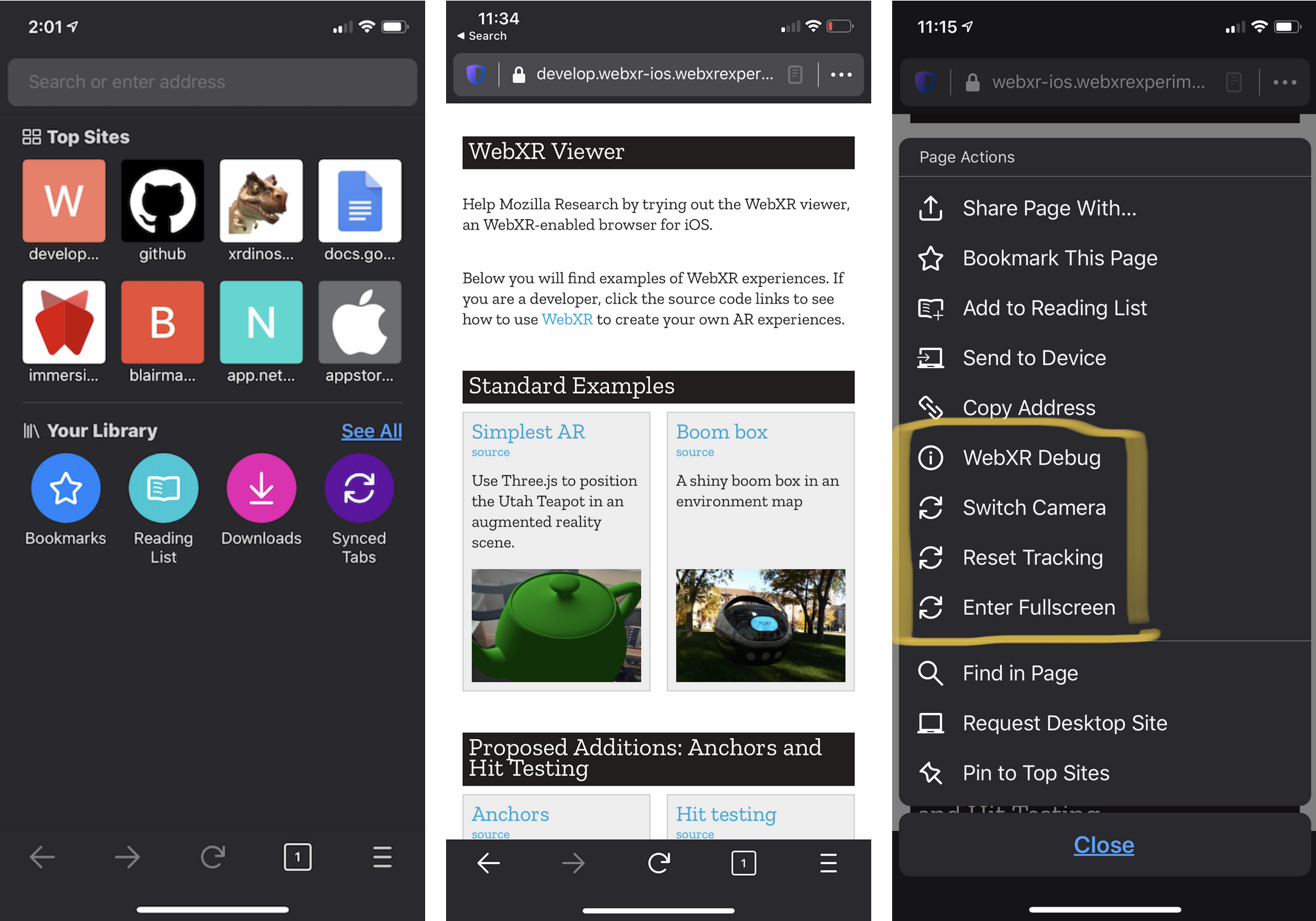
In Augmented Reality and Virtual Reality News
June 1, 2020 – Mozilla has recently announced that version 2.0 of its WebXR Viewer has been released. According to the company, it is the first web browser on iOS to implement the new WebXR Device API, which enables high-performance AR experiences on the web that don’t share pictures of a user’s private spaces with third party Javascript libraries and websites.
It’s been almost a year since the previous release (version 1.17) of Mozilla’s experimental WebXR platform for iOS. This latest release includes two major changes to the app:
- Updated Javascript API to implement the official WebXR Device API specification;
- ARKit-based WebXR implementation from the minimal single-page web browser has been ported to the full-featured Firefox for iOS code-base.
Mozilla’s early version of the WebXR Device API has been rebuilt to conform to current official specification standards. The company either updated its old API features to match current proposals (e.g., anchors, hit testing, and DOM overlay), marked them more explicitly as non-standard (e.g., by adding a nonStandard_ prefix to the method names), or removed them from the new version (e.g., camera access). Most WebXR AR examples on the web now work with the WebXR Viewer, such as the “galaxy” example from the WebXR Samples repository shown in the above image.
In the near future, the company has stated that it is interested in continuing to experiment with more advanced AR capabilities for WebXR, and seeing what kinds of experimentation developers can do with those capabilities. Most AR use cases need to integrate virtual content with meaningful things in the world. Genuinely useful consumer and business applications need to sense, track, and augment “people, places, and things”, and have content that persists over time, Mozilla states.
Enhancing the Immersive Web with these abilities, especially in a manner that offers privacy and security to users, is a key area Mozilla will be working on next. Blair MacIntyre, a Principal Research Scientist in the Mixed Reality team at Mozilla, noted in a company blog post: “We need to ensure that there is a standards-based solution that is secure and private, unlike the proprietary solutions currently in the market that are siloed to create new, closed markets controlled by single companies.”

The second above noted major change with this release will be immediately noticeable: when users launch the app, they will be greeted by the familiar Firefox for iOS interface, and be able to take advantage of many of the features of its namesake (tabs, history, private browsing, and using a Firefox account to sync between devices, to name a few). While not all Firefox features work, such as send-to-device from Firefox, the experience of using the WebXR Viewer should be more enjoyable and productive, according to the company.
Mozilla states that ultimately, this is an experimental app, aimed at developers hoping to explore web-based AR on iOS, and as a result, the company doesn’t plan on supporting it as a separate product over the long term. However, the company has made these efforts since, according to MacIntyre, “Apple hasn’t shown any sign of implementing WebXR, and it’s critically important for the success of the immersive web that an implementation exists on all major platforms.”
As a result, moved this implementation into the Firefox for iOS code-base to see how this approach to implementing WebXR would behave inside Firefox, with an eye towards (possibly) integrating these features into Firefox for iOS in the future. While there is still apparently plenty of UI work to do before moving this to a mainstream browser, Mozilla states that it is quite happy with the performance; WebXR demos run better in this version of the app than they did in the previous one, and the impact on non-WebXR web pages seems minimal.
For more information on Mozilla’s WebXR Viewer 2.0 release, and for the full blog post, click here.
Image credit: Mozilla
About the author
Sam Sprigg
Sam is the Founder and Managing Editor of Auganix. With a background in research and report writing, he has been covering XR industry news for the past seven years.




